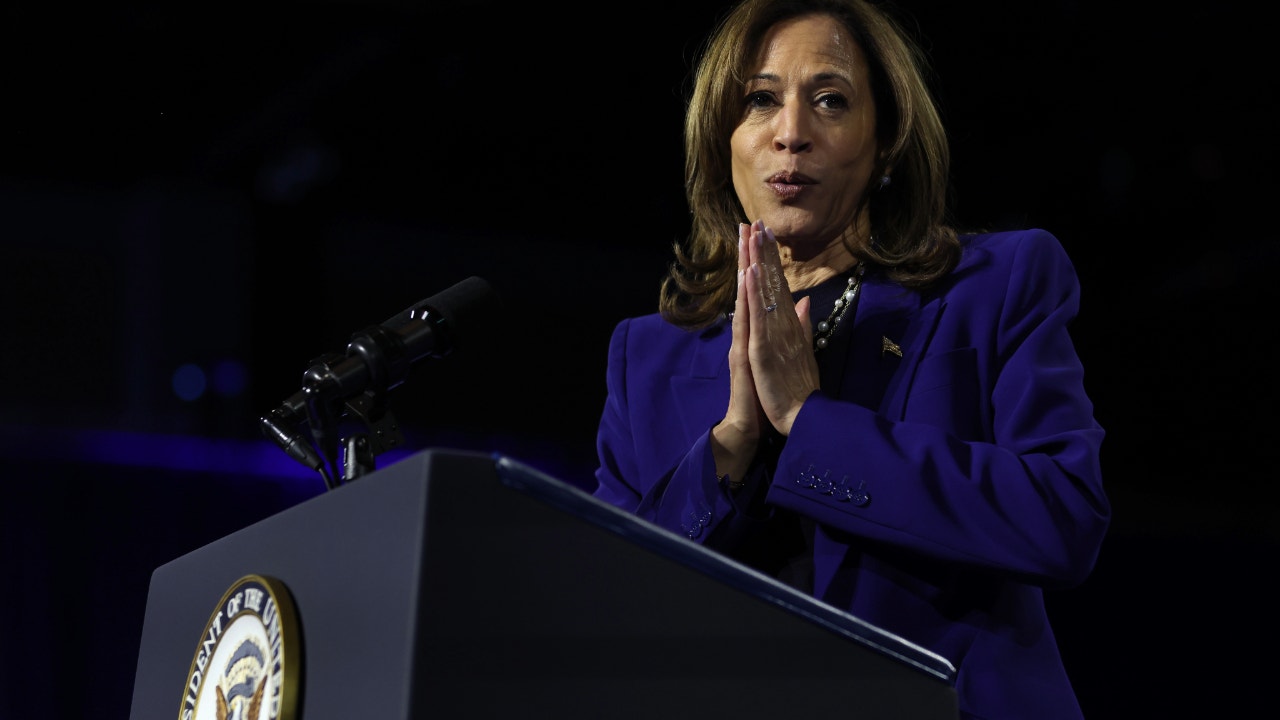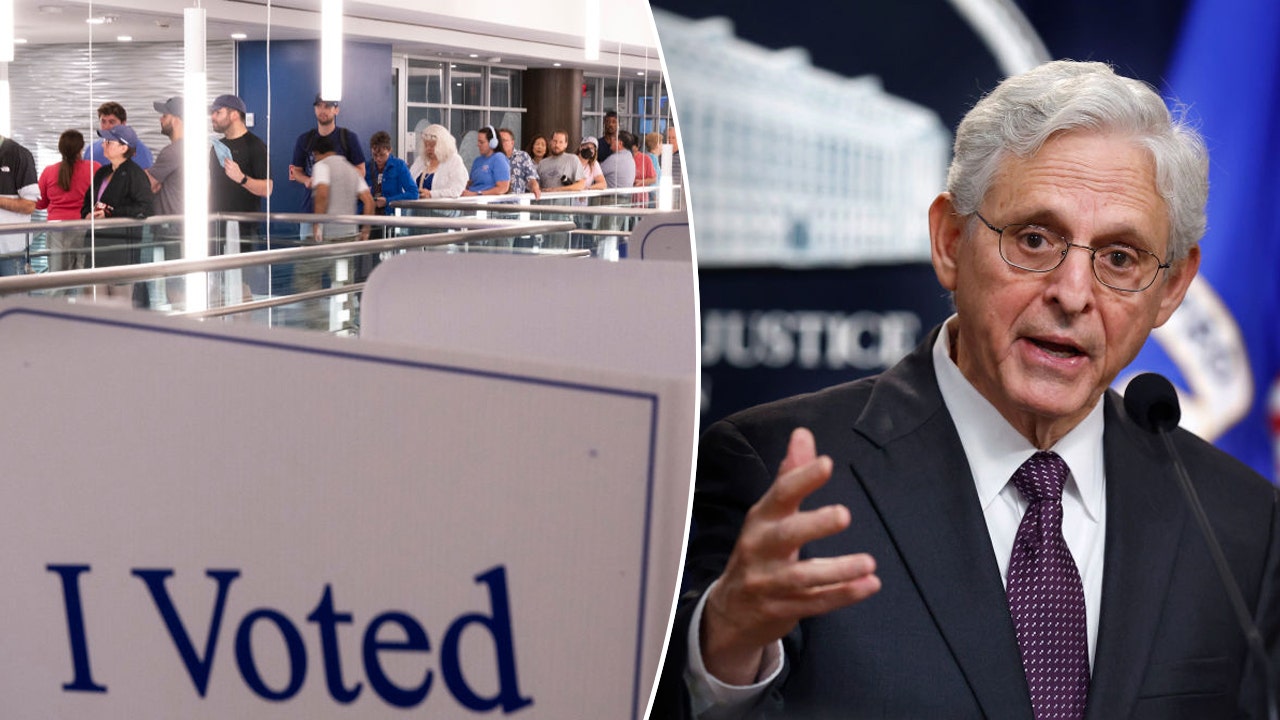New York
For Mayors of New York City, a Political Pilgrimage Awaits: Israel

The mayor’s return to New York City from overseas was plagued by mishap. The chair of his “reception committee” was late; his aides violated the health code by boarding the mayor’s ship, the Vulcania, before the ship could be screened for contagion.
And reporters — barred from asking questions on political or administrative matters — had the nerve to question the length of the mayor’s journey, which, in an apparent first for a New York City mayor, included a three-day visit to the new nation of Israel.
In the 72 years since Mayor Vincent R. Impellitteri’s voyage in 1951, every single New York City mayor would follow his lead, in recognition of a faith-based political reality: New York City is home to the largest population of Jews outside of Israel.
Mayor Eric Adams upheld that rite of passage this week, visiting Jerusalem and Tel Aviv in a three-day tour highlighted by meetings with Israel’s prime minister, Benjamin Netanyahu, and its president, Isaac Herzog.
The timing of Mr. Adams’s trip seemed potentially fraught, with a crisis now roiling Israeli society over Mr. Netanyahu’s efforts to weaken the independent judiciary. The mayor, however, seemed determined to avoid controversy, and uncharacteristically declined to comment substantively on the debate.
He familiarized himself with Israeli drone technology, lunched on foods like vegan prosciutto and lychee tartar, visited historical sites like the Western Wall and the monument to Yitzhak Rabin, the assassinated prime minister, and toured the national police academy.
“I think we have our own issues,” Mr. Adams said in an interview in Tel Aviv on Wednesday, his last day in Israel. “We have a presidential race coming up. I think we need to be focused on that presidential race. We have a ton of issues.”
Mr. Adams has his own set of challenges, most notably an influx of migrants that he routinely characterizes as among the worst humanitarian crises in New York City history. In a Siena College poll released this week, New York voters disapproved of the mayor’s handling of the issue, 47 percent to 31 percent.
But Mr. Adams contended that his trip to the Middle East was of justifiable importance to the city, saying that he wanted to learn about Israeli technology and efforts to combat antisemitism.
The mayor’s large entourage to Israel this week included several ultra Orthodox leaders: Chanina Sperlin, a Hasidic leader in Crown Heights, Brooklyn, and a longtime ally who stood with Mr. Adams onstage on election night; Yoel Lefkowitz, a Hasidic leader and New York political operative; and David G. Greenfield, the Orthodox leader of Met Council, a Jewish nonprofit in New York.
Mr. Sperlin and Mr. Greenfield serve on the mayor’s Jewish Advisory Council, created by Mr. Adams as a conduit between his administration and New York Jews; it is dominated by Orthodox men.
Mr. Greenfield contended that the mayor’s itinerary was not focused on Orthodox interests and that the trip would appeal to the broader Jewish community.
“We’re sitting here on the beach of Tel Aviv — that is certainly not an ultra Orthodox activity,” Mr. Greenfield said.
Still, the political benefits seemed clear.
Voters with distinctive Jewish last names represent 12 percent of New York City’s 4.4 million active registered voters, according to Jerry Skurnik, a senior consultant for Engage Voters U.S., a political consultancy. Of those voters, 62 percent are Democrats and 16 percent Republicans.
In the 2021 citywide election, they represented 16 percent of turnout, although Mr. Skurnik said the actual percentage is likely to be higher because “many Jews do not have distinctive Jewish surnames.”
In the Orthodox and relatively conservative strongholds of Brooklyn, Mr. Adams, the former Brooklyn borough president, has cultivated particularly strong ties.
In the heavily Hasidic precincts of Williamsburg, Crown Heights and Borough Park, Mr. Adams won more than 75 percent of final-round votes in the 2021 Democratic primary, according to John Mollenkopf, the director of the Center for Urban Research at CUNY.
And while there has been generational drift, with younger Jewish voters identifying less strongly with Israel, its appeal to Jewish voters remains strong.
“There’s no question that Jewish voters in New York City want to see their leaders go to the country that they hold so dear,” said David Lobl, a Jewish consultant who helped arrange trips to Israel for former Gov. Andrew Cuomo.
New York City “is the other Jewish homeland outside of Israel and the wellspring of Jewish culture globally in many ways,” said Bill de Blasio, the former mayor, who traveled to Israel three times during his years in elective office.
“Everyone loves their homeland, don’t get me wrong,” Mr. de Blasio added. “But I think the translation of that love and connection, it’s nowhere more palpable than it is for a lot of members of the Jewish community for Israel.”
Israel has been mired in conflict since its founding, and for mayors, traveling there comes with risks and rewards.
When Edward I. Koch traveled to Jerusalem in 1980, part of a 16-day tour of Egypt and Israel, American tourists serenaded him with “I Love New York.”
When Rudolph W. Giuliani traveled to Jerusalem in 1996, he got into an argument with a Long Island family whose Palestinian relative had died in a bus bombing there.
When Mr. de Blasio traveled to the country in 2015, he had to scrap a trip to the West Bank to meet with Palestinians because of security concerns. He met with Israeli-Arab and Jewish schoolchildren instead.
Besides Mr. Adams’s meeting with Mr. Netanyahu, an event that he said made him “proud,” he also met with leaders protesting Mr. Netanyahu’s weakening of the judiciary, which they fear will undermine Israeli democracy.
Both gatherings were closed to the press. Fabien Levy, a deputy mayor for communications who served as his spokesman on the trip, said Mr. Adams also “met with Islamic leaders and community members, including members of the Palestinian community. One even spoke publicly at the dinner we attended last night.”
Mr. Levy declined to provide their names.
Those meetings did little to assuage some Muslim New Yorkers, a New York constituency of nearly 800,000 that Mr. Adams has taken pains to cultivate.
“Mayor Adams professes to stand firmly for racial and religious equality, but his trip to an apartheid state contradicts his rhetoric,” said Afaf Nasher, executive director of the Council on American-Islamic Relations of New York.
Mr. Adams said in a brief interview in Tel Aviv that he had relied “for the most part” on Eric Goldstein, chief executive of the UJA-Federation of New York, a mainstream Jewish group that sponsored the trip, to create his itinerary.
“I told them what I wanted to do,” he said, naming priorities like technology and law enforcement.
One of his first stops in Israel was the hospital bedside of a popular Hasidic rabbi. A picture of the visit was posted on X, formerly known as Twitter, with Mr. Adams writing that the rabbi’s “faith and wisdom are unstoppable.”
But Mr. Adams sparked controversy by appearing with Yisrael Gantz, a leader of the settlement movement, who then told reporters that Mr. Adams had agreed to tour the settlements the next time they met. Mr. Adams denied that version of events: “In the entire meeting, the word ‘settlement’ did not come up,” Mr. Adams said on Wednesday.
Mr. Adams made no attempt to visit the Palestinian territories.
“That was not on our agenda at all,” the mayor said.
No mayoral visit to Israel, or trip abroad, comes free of criticism, not even in 1951.
When Mr. Impellitteri returned to New York City, he responded to disapproval of his lengthy absence in what a reporter described as a “tart tone.”
“Up to the time I got on board this ship, I had been working 14, 16 and 18 hours a day, from 8 in the morning until midnight, or 1 o’clock the next morning,” Mr. Impellitteri responded, sounding as aggrieved as a certain modern-day mayor. “My only rest has been on this ship in the last 10 days.”
Patrick Kingsley contributed reporting from Jerusalem.

New York
How Much Do You Know About New York City and Climate Change?
Since fall this year has felt like summer and the lack of rain in October has set records, it’s a good time to brush up on how New Yorkers are experiencing and preparing for climate change. Hint: It’s a bit different from what people are doing in other parts of the country.
What are the factors that make global warming in New York City a unique challenge? Test your knowledge by taking this quiz.
New York
Video: Timothée Chalamet Crashes Look-alike Contest

new video loaded: Timothée Chalamet Crashes Look-alike Contest
transcript
transcript
Timothée Chalamet Crashes Look-alike Contest
The Oscar-nominated actor showed up unannounced to a look-alike contest for himself in New York City.
-
“Oh my God!” [crowd screaming] “We love you, Tim. We love you, Tim. “Guys, we’re going to make a little bit of a pilgrimage across the street because the park enforcement is yelling at us, which is totally understandable.” “Yeah!”
Recent episodes in New York
New York
Why Does This Building by the Subway Need 193 Parking Spots? (Yes, Exactly 193.)

A rendering of the new apartment building at 975 Nostrand Ave. in Brooklyn. Underground parking spaces not shown.
Lemons Bucket
The apartment building under construction at 975 Nostrand Avenue in Brooklyn is the kind of project that city officials and economists say New York needs to solve the city’s severe housing shortage.
It will have 328 new homes at rents targeting young professionals, from studios up to three-bedrooms, with a grocery store on the ground floor.
But the ability to construct these homes, at this location, turns on a peculiar problem: How do you also find a place to park 193 cars on this lot?
The site is about one block from the subway. To fit ample parking here, the builders had to excavate 14 feet underground. And some of this cellar space is needed for utilities and storage. The remaining space is irregular. These are the structural columns supporting the apartments above. And here’s where you fit the cars. Actually, that’s only 146 of them. To accommodate the remaining cars, each spot here holds a two-car mechanical stacker. (This is the actual diagram submitted to the New York Department of Buildings for review.)
This Brooklyn building is subject to a powerful but obscure force operating in communities all over the country: the parking minimum. Every one of its 193 parking spaces is prescribed by the city’s zoning code, in dizzying detail.
The project must provide, at minimum, half a parking spot for each housing unit; one parking spot for every 400 square feet of retail and art gallery inside; and one spot for every 300 square feet of space in part of the planned grocery store (the other part of the grocery store is exempt from parking, and we’re sorry but only a land use lawyer can explain this).
New York is now proposing to radically simplify requirements like this by ending parking mandates on all new housing citywide. The move could make it cheaper and faster to construct new homes amid a housing affordability crisis, and it would make New York the latest American city to toss out decades-old parking rules. But as a movement to end parking minimums gains traction across the country, what happens in New York will be revealing: In the least car-dependent big city in America, the instinct to accommodate cars may still prove stronger than fears about the shortage of homes.
“These rules were written at a time when cars defined everything,” said Dan Garodnick, the head of New York’s Planning Commission.
It was a moment when cities were first racing to adapt to cars and compete with suburbs full of plentiful parking. “We are in a different era today,” he said.
That assessment will be put to the test in the coming weeks, as the City Council is set to vote on the change as part of a broader package of housing measures.
Mr. Garodnick is quick to clarify that the administration is not proposing to end parking in residential buildings — just the required minimums. Developers will still build parking, he reasons, where there’s demand for it (and in fact, today some build more than the minimum). But they’ll also have the option to build none.
Those opposed to the change are skeptical of its benefits: “I don’t see where less parking means there’s greater affordability,” said Fred Baptiste, the chair of Community Board 9, where 975 Nostrand sits. “It just means there’s less parking.”
Six Parking Spots Per Bowling Lane
Cities and towns nationwide have had parking minimums sitting unquestioned in their zoning codes for half a century. But in recent years, dozens of cities have removed them. Buffalo was among the first in 2017. Austin, Texas, last year became the largest U.S. city to do so.
As housing has grown more expensive across the country, cities have increasingly realized that parking can make the problem worse, raising the cost and complexity of development, even discouraging the construction of homes.
Construction costs run from $10,000 per parking space in a surface lot to $70,000 per space in an underground garage. That gets baked into what developers must recoup from tenants and buyers, whether they own a car or not. The rules drive up the per-unit cost to build affordable housing (in New York, affordable units near transit are exempt from parking minimums, but the rules still apply elsewhere). And they often require more parking than people actually use.
The mandates began in the 1950s and ’60s as mass car ownership expanded beyond the capacity of on-street parking. Minimums in New York were introduced in 1950 for new residential buildings. The city’s 1961 zoning code (the one still in place today) raised the requirements and added them for offices, retail and other building types. In New York and elsewhere, the rules typically take the form of ratios that have been copied from one city to another, handed from one generation of engineers to the next without much study or skepticism.
A Sample of Minimum Parking Rules 0.5 parking spots per unit plus 1 parking spot per employee
Senior Housing in Vallejo, Calif.
2 parking spots per dwelling unit
Manufactured Home in Knoxville, Tenn.
1 parking spot per 2 beds Monastery/Convent in Savannah, Ga.
1.25 parking spots per dwelling unit
Efficiency Apartment in Fargo, N.D.
1 parking spot per 4 rooms
Rooming House in New Orleans 1 parking spot per 2 beds
Fraternity/Sorority in Baltimore
2 parking spots per dwelling unit plus garage
Single-Family Home in Oklahoma City
1 parking spot per million gallons of capacity Sewage Treatment Plant in Dallas
1 parking spot per 100 sq. ft.
Haunted House in Gilbert, Ariz.
1 parking spot per 8 occupants plus 1 spot per 2 employees
Cemetery in Carver, Mass. 1 parking spot per 10 migrants at max capacity
Migrant Labor Camp in Queen Anne’s County, Md.
10 parking spots per 1 mile of trail
Nature/Bike Trail in Jefferson Hills, Pa.
1 parking spot per 250 sq. ft. of office/retail area Butterfly/Moth Breeding in SeaTac, Wash.
6 parking spots per lane
Bowling Center in Folsom, Calif.
1 parking spot per 50 sq. ft. of floor area
Night Club in Port Angeles, Wash. 8 parking spots per green
1 parking spot per 10 children plus 1 per employee
Child Care Center in Charlotte, N.C.
1.2 parking spots per bed 3 parking spots per court
Tennis Club in Rochester, N.Y.
1 parking spot per 100 sq. ft. of sanctuary seating area
1 parking spot per 60 sq. ft. of batting area
1 parking spot per 50 sq. ft. water surface plus 1 spot per 2 employees
Swimming Pool in Allentown, Pa.
“People just assume these numbers are right because they’re in the zoning code,” said Tony Jordan, who runs the Parking Reform Network, which advocates ending minimums. “No, they’re just made up.”
Beyond increasing construction costs, the rules have squeezed out of existence many common prewar urban housing forms, like four-unit apartment buildings on lots too small for parking. Mandates have meanwhile produced their own specific kinds of places: stores surrounded by surface lots, strip malls wrapped around parking, apartment complexes that have no ground-floor retail because the ground floor is full of cars.
And because the rules apply broadly, they can require parking in subsidized housing for low-income households least likely to own a car. They can force builders to construct 350 square feet of garage space for a 400-square-foot studio.
Given that cities have only recently begun to change these rules, there’s limited evidence of what happens after they’re gone. In the first years after Buffalo ended parking minimums, about half of new developments built fewer parking spaces than they were previously required to, supporting the idea that the standards are too high for some properties, too low for others.
Proponents also hope that by ditching parking mandates, cities communicate another message: “If you require a place to park a car, you’re automatically saying a car is welcome,” said Felicity Maxwell, a planning commissioner in Austin who voted to end minimums there last year. And many of the prewar buildings and neighborhoods cherished today are places that have long thrived without welcoming cars.
Compared with Austin and Buffalo, New York is proposing a half-measure: to end mandates only for housing (at 975 Nostrand, for example, the retail space would still require some parking). Mr. Garodnick demurred on whether ending all minimums would be a logical future step for the city.
An Expensive Hole in the Ground
New York is also a particularly tough place to create parking. Land is so scarce and valuable that it seldom makes sense to use it just to park cars. 975 Nostrand was originally a single-story grocery store with a large parking lot. Now it will become home to 500 to 600 people, with a grocery store on the ground floor.
But making the best use of that limited space means developers frequently turn to the hardest possible parking solution: putting it underground.
“When you go below grade in New York City, you are talking about the most expensive and the most risky part of a project,” said Sam Charney, principal of the developer Charney Companies. His worst construction horror story involved a mixed-use building that required two levels of underground parking in a corner of bustling Williamsburg in Brooklyn. He thought the parking actually necessary was none.
Before Charney Companies built The Dime in Williamsburg, it first dug this 30-foot-deep hole (while propping up the neighboring properties) for a two-story underground garage. Charney Companies LLC
Excavation is costly and onerous. Neighboring buildings must be underpinned. Buried oil tanks and boulders get in the way. Below the water table, everything must be waterproofed. And all of this adds months to construction, during which time developers are carrying large loans.
Parking stackers help save space by lifting cars up so others can park underneath. But then garages require parking attendants to operate them — and that’s another cost someone has to pay.
All of this is further complicated by the fact that the exact quantity of parking required depends on how the land at a given site is zoned.
Here are just the few blocks around 975 Nostrand:
Buildings across the street from each other are often zoned differently.
And each zone has its own minimum parking ratios for housing.
Source: New York City Zoning & Land Use Map
Certain zones also exempt parking on the first five or 15 housing units, incentivizing builders to stay below that cutoff — or to carve lots up into several smaller buildings with fewer total housing units.
“You really don’t want to build a bigger building than you can provide parking for,” said David West, an architect.
These trade-offs for developers don’t garner a lot of sympathy with New Yorkers who have a more prosaic concern: where to park after a long work day or when there’s a hungry child in the back seat. The community board that encompasses the Nostrand development opposes getting rid of the minimums, as do politicians representing parts of the city that don’t have good transit access.
“For Staten Islanders, it’s almost impossible to not have at least one car per household,” said Joseph Borelli, who represents southern Staten Island as minority leader of the City Council.
Source: New York Times survey; New York City Zoning Application Portal
The City Planning Commission expects that the greatest change to come from ending parking mandates would be in the “inner outer” boroughs — not in the lowest-density neighborhoods that have opposed it the most, but in places like Nostrand Avenue in Crown Heights. That’s where the gap is widest today between the quantity of parking required and the demand for it around public transit. In the densest parts of the city — much of Manhattan, and Long Island City in Queens — parking minimums are already waived (Manhattan, in fact, has had parking maximums since 1982, in a bid to reduce car travel and improve air quality).
Some suggest the city should more narrowly tailor its proposal rather than sweep away requirements citywide. But that would be an extension of what New York has done for years — carving out piecemeal exemptions for certain geographies, lot sizes, affordability levels and building amenities, until it has arrived at an intricate web of parking rules.
To proponents of ending minimums, the citywide simplicity is part of the point: The requirements aren’t just arbitrary near the subway; they are arbitrary everywhere because a prescribed ratio can never be just right for every lot. And even on Staten Island, lifting the minimums might allow someone to build an accessory dwelling unit — without extra parking — in the backyard. That would serve the city’s housing goals too.
At 975 Nostrand, where the developer Hudson Companies is about a year away from completing the building, the managing director of development, Marlee Busching-Truscott, struggled to estimate exactly how much parking would have been built if that number weren’t dictated by a zoning table. This is one of the other distortions of parking mandates. Developers typically try to study the market for nearly every facet of a project — the mix of apartment sizes, the targeted rents, the building amenities, the outdoor spaces, the kitchen finishes. But they don’t do that basic exercise for something as costly and sizable as a parking garage, because they have little choice in the matter.
Though Ms. Busching-Truscott couldn’t say exactly how the building would have taken shape without parking minimums, “I don’t think we would have gotten to 193 spaces that would have required having a fully excavated cellar and a chaotic layout.”
That result speaks to the building’s essential paradox: “This is transit-oriented development,” she said, “that you’re still building around the car.”
-

 Movie Reviews1 week ago
Movie Reviews1 week agoAlien Country (2024) – Movie Review
-
/cdn.vox-cdn.com/uploads/chorus_asset/file/25431700/STK201_SAM_ALTMAN_CVIRGINIA_A.jpg)
/cdn.vox-cdn.com/uploads/chorus_asset/file/25431700/STK201_SAM_ALTMAN_CVIRGINIA_A.jpg) Technology1 week ago
Technology1 week agoOpenAI plans to release its next big AI model by December
-

 Health7 days ago
Health7 days agoNew cervical cancer treatment approach could reduce risk of death by 40%, trial results show
-

 Culture1 week ago
Culture1 week agoTop 45 MLB free agents for 2024-25 with contract predictions, team fits: Will Soto get $600M+?
-

 Sports6 days ago
Sports6 days agoFreddie Freeman's walk-off grand slam gives Dodgers Game 1 World Series win vs. Yankees
-
News5 days ago
Sikh separatist, targeted once for assassination, says India still trying to kill him
-

 Culture5 days ago
Culture5 days agoFreddie Freeman wallops his way into World Series history with walk-off slam that’ll float forever
-

 Technology5 days ago
Technology5 days agoWhen a Facebook friend request turns into a hacker’s trap















